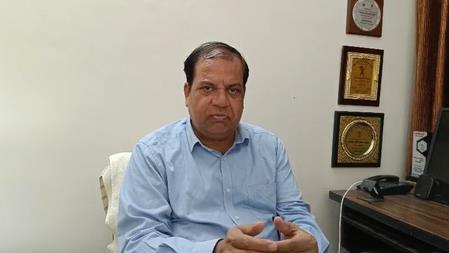
Economists From Lucknow, Chennai Laud India's Projected GDP Growth Of 7.8 Pc In Q1 FY26
Siddharth Kalhans, an economic expert from Lucknow, described the projection as a strong indicator of India's upward economic trajectory.
“This shows our growth graph is rising steadily, even surpassing RBI's predictions. The recent Union Budget's impact is now visible, and the US tariffs are expected to cause only a marginal 0.5 per cent dip-insignificant for a large economy like ours,” he said.
Chennai-based economist Suriya Narayanan also noted the positive momentum.
“The GDP growth is higher than expected. India has proven its ability to withstand global economic challenges like tariff hikes. While RBI estimated a 6.5 per cent increase, the actual numbers suggest stronger performance. To sustain this growth, we must now focus on strengthening our export sector,” he added.
Experts believe India's diversified trade network-exporting to over 100 countries-plays a crucial role in cushioning external shocks, keeping the economy on a steady growth path.
India's real GDP growth accelerated to 7.8 per cent year-on-year in the first quarter of this fiscal, from 7.4 per cent in the fourth quarter of last fiscal.
“Growth on the supply side rebounded 7.6 per cent, driven by the services sector, with a statistical low-base effect coming into play as well. The manufacturing sector gained from lower input costs amid rising domestic demand and advanced export shipments,” said Dipti Deshpande, Principal Economist, Crisil.
Consumer demand - buoyed by healthy rural incomes, lower inflation and interest rates and income tax relief - is expected to remain robust in the coming quarters and support overall GDP growth, while healthy government investment spending should continue to provide a buffer.
On the demand side, the main driver, household consumption, rose to 7 per cent from 6 per cent. Government spending also accelerated, with government consumption expenditure and investment seeing improvement.
Increased front-loading of capital expenditure by the states and the Centre (combined at 27.8 per cent on-year during the quarter) played a major role in supporting growth. A ramp-up in exports prior to the imposition of the US tariff hikes also helped.
“However, India's export advantage would fade in the coming quarters because of the 50 per cent tariff hikes imposed by the US. Besides, a broader global slowdown triggered by the tariff actions could further dampen external demand,” said Deshpande.
Additionally, higher US tariffs and elevated uncertainty could impact domestic private investments this fiscal. The tariffs, a global trade slowdown and geopolitical uncertainties are expected to have a non-uniform impact on the Indian economy.
However, in the absence of a trade deal between India and the US, a few sectors will have to brace for a bigger impact, given the US tariffs.
Specifically, the micro, small and medium enterprises sector, which accounts for 45 per cent of India's total exports, faces formidable challenges, said Crisil.

Legal Disclaimer:
MENAFN provides the
information “as is” without warranty of any kind. We do not accept
any responsibility or liability for the accuracy, content, images,
videos, licenses, completeness, legality, or reliability of the information
contained in this article. If you have any complaints or copyright
issues related to this article, kindly contact the provider above.


















Comments
No comment